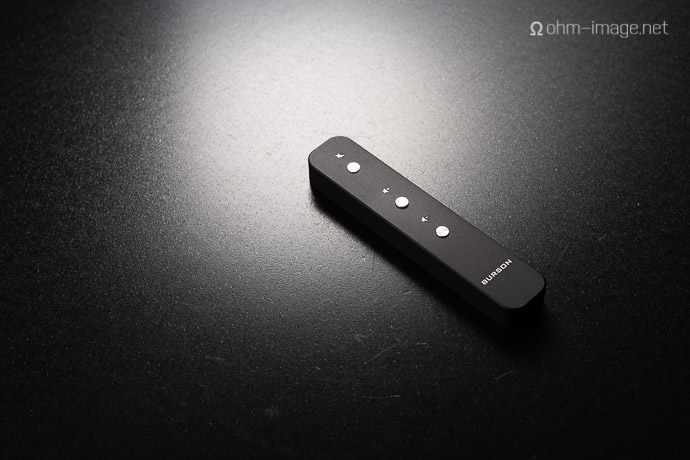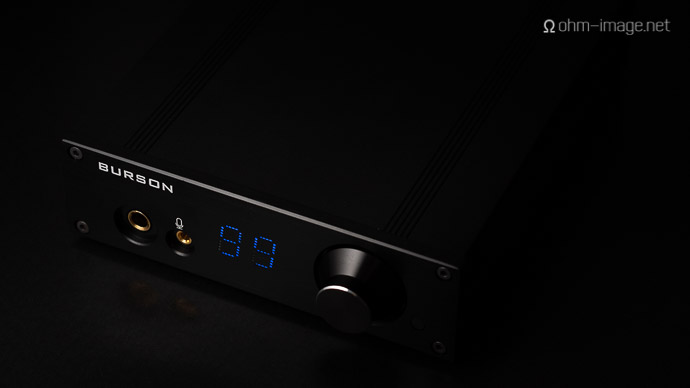Disclaimer: Burson supplied Play and the upgraded mainboard for the purposes of this review. I paid nothing for it. It’s DAC interfaces over USB, is compatible with DSD 256, and has one of the most powerful headphone amps I’ve ever had on my desk. Prices range from 299$ to 549$. I tested both the base model and the ticked out version for this review. You can find out all about it here: Burson Play.
Spec:
|
Measurement |
Package Content |
||
|
Input impedance: |
35 KOhms |
Burson Play Unit |
PC Connection Cable Set |
|
Frequency response: |
± 1 dB 0 – 35Khz |
Remote Control (optional) |
6.5mm to 3.5mm Socket Adaptor |
|
THD: |
<0.02% |
RCA Cable |
2.5mm hex key |
|
Output impedance (Head Amp): |
8 Ohm |
Power Supply |
100-240V AC |
|
Output impedance (Pre Out): |
35 Ohm |
||
|
General |
|||
|
Inputs: |
USB |
Weight: |
app. 2Kg |
|
Outputs: |
RCA Pre-Amp / Headphone Jack |
Dimensions: |
210mm x 145mm x 45mm |
|
Impedance (Headphone Jack) |
Power |
Signal to Noise Ratio |
Separation |
|
16 Ohm |
2W |
92db |
99% |
|
32 Ohm |
1W |
95db |
99% |
|
100 Ohm |
0.32W |
94db |
99% |
|
150 Ohm |
0.20W |
96db |
99% |
|
300 Ohm |
0.1W |
94db |
99.5% |
|
DAC Spec |
USB Spec |
||
|
Channel Separation: |
132 dB @ 1KHz, 122 dB @ 20KHz |
Desktop OS: |
Win XP, 7, 8, 10 Mac OSX |
|
THD+N: |
0.0015% @ 1KHz, 0dBFS |
Mobile OS: |
iOS* & Android (OTG support) |
|
PCM & DXD Support: |
PCM ? 384kHz up to 32bits |
||
|
Native DSD: |
Native DSD 64 / 128 / 256 |
||
|
DSD over PCM: |
DoP64 / DoP128 / DoP256 |
||
|
Asynchronous Isochronous |
An OCD takeover of our audiophile hobby is inevitable. JVC’s FA-HD-01 switches its sound tubes like other earphones switch ear pads. It does it on spring-loaded bajonettes. It swivels at the mount, is tough as nails, and sports a great, swappable cable. Burson sell a number of different Play models, pack swappable op-amps, stacks, and now, mainboards. They are famous for making ‘ultimate’ op-amps for various amps out there. They sent Play to me earlier in the year. It’s a wonderful USB DAC/headphone amp that fits in a computer bay, or on your desk, with squishy feet to match. It does DSD 256. I was impressed by its power and absolute stability under any load. What dismayed me was the amount hiss it would spit from sensitive earphones. Burson released an upgraded mainboard. It is heavily trace-tracked, whose ostensible audio goal is to suppress line noise when playing music or games through sensitive earphones. By and large, Burson nailed it.

An obvious question is: why would anyone use earphones – sensitive or otherwise – with a powerful, home DAC/amp? (Oh, and let me tell you, Play really packs a punch.)
That’s an answer I’ve spent weeks rooting at. The only good answer I have is that Burson, like our maturing hobby in general, are OCD. They found something that could be improved. They improved it. They didn’t need to. But because they could, and because they are detail oriented, and love tinkerers, they did. They made the new mainboard available to both potential buyers and owners alike. It goes for 99$. As is typical, I’ve tested as many configurations as possible and come to the conclusion that they did the right thing. Play is powerful as all hell. Swapping the old mainboard for the new one one wipes line noise by 1/3 to 1/2. It retains the same massive power. As befits the new, millennial glasses I wear, I’m listening to Arcade Fire [EP]. It is pumping all over my JVC FA-HD-01 at a volume setting of 03/99. The FA-HD-1 is sensitive. Play is powerful. A volume of 10/99 is too much for me. For reference, a setting of 5/16 from an iPhone SE pretty much matches the Play at 3/99. The sky really is the limit from there. For instance, Play puts Dekoni Audio’s amazing Blue Fostex T50RP MKIII reaches discomfort thresholds at volumes from 35-50/99, and is best suited to these ears at around 20/99. Ditto Hifiman’s Susvara.

That’s real power.
Play is DSD compatible up to DSD 256. Its DAC is exemplary: low jitter, high SNR, good stereo separation, and maintains incredible analogue signal integrity thanks to both an amazing pre-amp and a hella good headphone amp. I didn’t expect its quality (or power) from a 299$ machine. Knowing Burson, I expected a certain amount of DIY pretensions. I just didn’t expect Play to plug and play so well with such a diverse milieu of hardware. Like, how many desktop-based DAC/amp units can be discreetly plugged into PC bays, utilising the computer’s internal power supply? All you have to do is swap the wall mains-based cattail power supply; in its stead you use the little plug Burson supply for your PC’s power supply. Then you shove the sucker into the PC chassis. Not bad. Not expected. About as modular as I’ve seen.
Operation and sound after the jump:










Raimei Templar
Hello and thanks for the review! I appreciate you taking the time to do some measurements and the results look quite good indeed. I espcially appreciate you listing which headphones you used as that allows one to get a real world look at how it will perform. One things I am curious about though is which OP AMPS did you have installed when you did the measurements?
ohm image
Sorry, the measurements I did were conducted with the V5 options.
Ojasvi Mathur
So much Details, but no words in real about Sound or real comparision with similarly placed products or even their own Burson Solist MK2 .
Similarly no impressions with any sets of Headphones of diff. Tiers! ranging from powerful to easily amped ones…!!
ohm image
How’s this: it makes even the smallest details jump forward from the fabric of space time, enveloping me in music so soft and yet so finely textured that my toes curl! I gave plenty of detail regarding sound, and much more than is necessary from a device that will be described by different people differently.
I explained how it performs with earphones and headphones. I won’t bother with overly subjective dribble. You can find plenty of other places and authors to indulge that desire.
Pierre
I currently am using a Schiit Bifrost (DS, not MB) + Magni 3 in the office.
My headphones are the Meze Classic 99 Neo…
Would the Play be an upgrade for this setup? Not sure if there’s a simple answer here, but I’m hoping so.
Music is mainly heavy metal, from soft to all kinds of extreme.
Thanks!
Nathan
Hey mate, I’m sorry but I don’t know much about the Bifrost as I’ve not used it.
DC
Is the sound signature as usual for bursons? sound fast and strong? or would this be warmer?
did you test with the hd650?
andrew doan
I use Window 10. Is it Burson Play V5i a real plug and play as advertising ? Since it does not have an other digital inputs and I always have a hard time to install ther drivers, I have to return the nice Fostex HA 4Bl. My ignorance in installing the sofware and to install the driver limited me to the optical and coaxial connection.
I hate to return the Play V5i if there is complication in install driver.Thank you.
ohm image
I don’t use Windows at all so I can’t comment on whether it plugs and plays with Windows. If it doesn’t, that appears to be a Windows problem rather than a Burson problem.